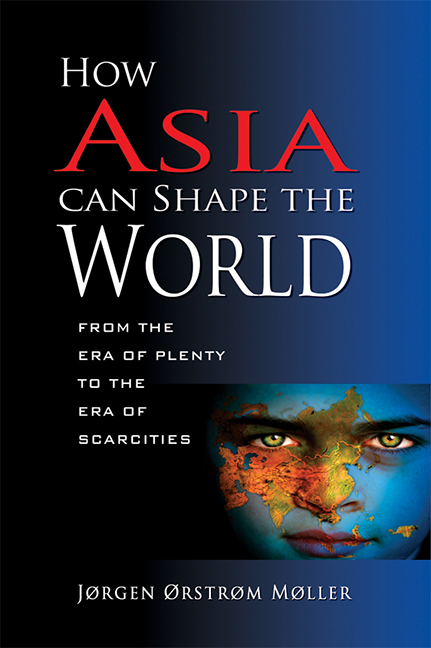7 - INTERACTION
Published online by Cambridge University Press: 21 October 2015
Summary
The first part of this chapter takes as its starting point the analysis of the main elements classified in three groups in Chapters 3, 4, and 5: those supporting growth and stability; those liable to work for or against these, depending on policymakers’ decisions; those seen as obstacles; and as a fourth item, foreign and security policies capable of derailing the development. The stage is then set for examining how the various elements interact with one another and what the decisive issues are for the interaction. This will provide some tools for showing where policymakers have to be vigilant, and also provide a glimpse of some early warning signals indicating in which way Asia is moving.
The second part is an attempt at forward looking analysis based on two assumptions: first, that Asia continues to stick to the Western values adopted during its industrialization over the last thirty years, and second, that the economic model and political system remain essentially untouched. Fundamentally it is an extrapolation.
THE FOUR TRIUMVIRATES
Broadly speaking Asia's future can be defined inside four triumvirates of three key issues, each interacting in turn: external environment, domestic policy issues, technology/corporate governance, and environment/quality of life.
The various elements inside these triumvirates interact and the triumvirates interact with one another, pushing Asia towards either a sustainable growth model, or creating obstacles and casting doubts on the future, and even raising the spectre of the implosion of Asian societies, or at least instability.
The External Triumvirate: Globalization, External Security, and Economic Integration
A high commitment to globalization cements Asia's role in economic globalization, opens the door for Asia to take on the role as guarantor of globalization, while at the same time pursuing regional integration. Asia moves from an inactive role to being an active global policymaker. Instead of adjusting to the system as it is now, with policies defined by determining powers such as the United States and Europe, Asia starts to shape or require international/global rules. This will benefit Asia's productivity and competitiveness as rules tune in to favour Asia's production structure and investment patterns. Globalization will still function globally, but gradually turn around to serve as a vehicle for Asia, instead of the United States and Europe. International institutions providing the institutional framework for globalization will tend to be governed by Asia's interests with regard to substance as well as decision making.
- Type
- Chapter
- Information
- How Asia Can Shape the WorldFrom the Era of Plenty to the Era of Scarcities, pp. 470 - 506Publisher: ISEAS–Yusof Ishak InstitutePrint publication year: 2010



